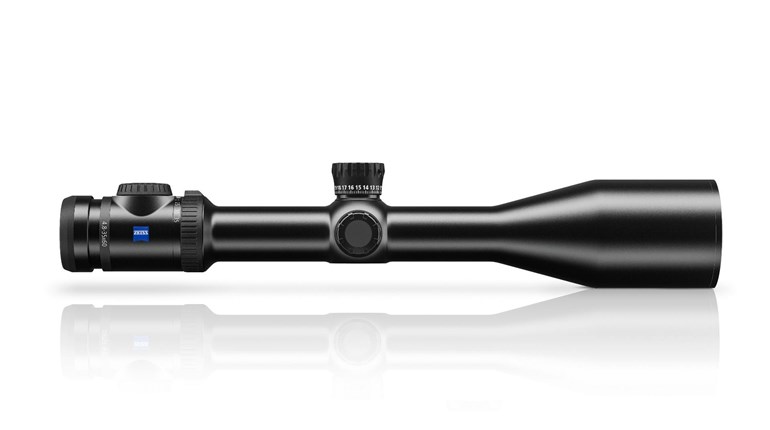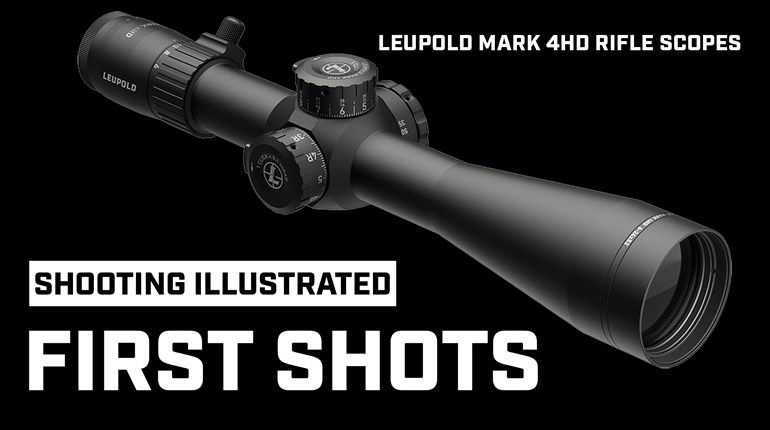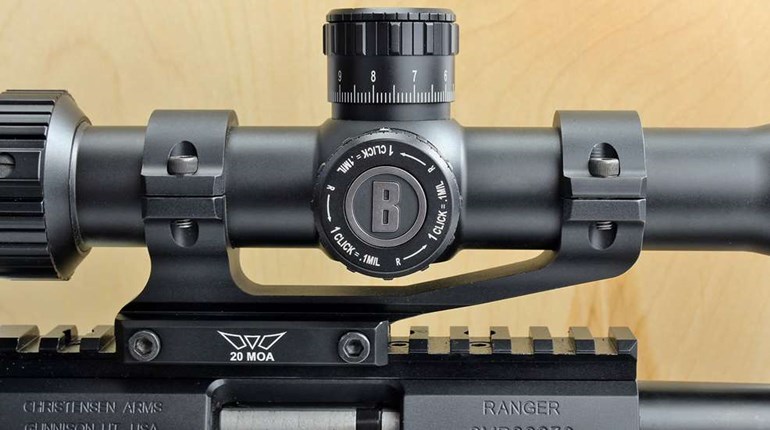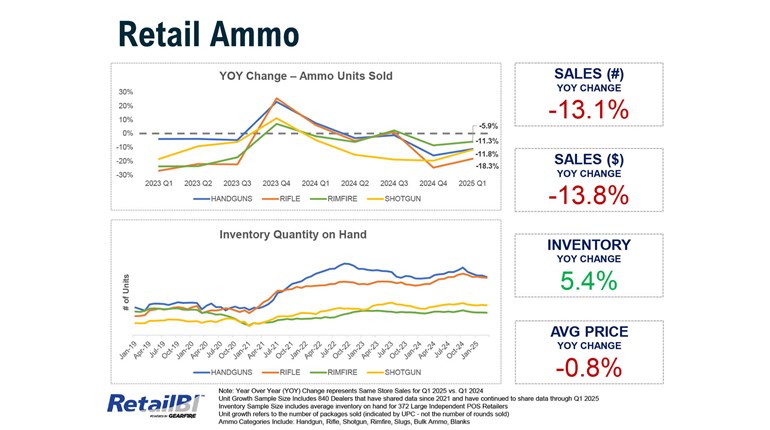
With apologies to vegetable juice and automobile engines, riflescope users can now have a V8, too. A Zeiss V8.
Zeiss’ newest entry into the ever-growing, ultra-competitive, high-end scope market sports an 8X zoom range. Achieving this apparently required a larger-than-average main tube. The one on my 1X-8X-30mm test scope measures 36mm across. (The other models in the V8 line—the 1.8X-14X-50mm, 2.8X-20X-56mm and the whopping 4.8X-35X-60mm—all have 36mm main tubes.) That’s the diameter of the objective lenses on many popular hunting scopes like Leupold’s 2.5X-8X-36mm VX-3i. “Big” is an inadequate adjective for the Zeiss V8. “Massive” seems more accurate, except despite its bulk, this 1X-8X scope weighs just 21 ounces. That’s right where many popular 3X-18X scopes land these days.
Thankfully, the scope ships with superb 36mm Talley quick-detach rings included. You’ll have to order bases for your specific rifle.
In profile, the 1X-8X-30mm V8 looks like an oversized version of our traditional, low-power 1.2X-4X-20mm scopes. This is because neither has an objective lens bell, and for good reason: They don’t need one.
The flared objective bell of most scopes is there to accommodate an objective lens that’s larger than the main-tube diameter. Why? To admit more light into the instrument. The more light that enters, the brighter the view because a larger objective helps create a larger exit pupil (EP). The EP is the circular window of light you see in a scope’s eyepiece when held at arm’s length. EP diameter is a product of objective lens diameter divided by magnification. At 2X, the Zeiss V8’s 30mm objective should yield a gargantuan 15mm EP, roughly 8mm larger than any human pupil can encompass. But it actually measures just 10mm due to the limiting diameter of internal erector lenses. Nevertheless, 10mm is 3mm larger than a human pupil can dilate. At 8X this scope still puts out an EP of nearly 4mm, more than adequate for clearly seeing crosshairs on game 45 minutes to an hour after sunset.
I’m guessing that dusk, dawn and twilight hunting conditions are what Zeiss is addressing with this scope. Europeans routinely hunt driven boar in dark forests, as well as roe deer and red stags at the edge of night, and for those purposes the V8 should shine.
Further evidence that this tool is aimed at low-light shooters is its distinct illuminated reticle. A third turret on the left side of the saddle holds a CR2032 battery. Nothing unusual there, but unique is the on/off switch and step-less rheostat atop the ocular bell for controlling the red dot’s appearance. Its profile is low, its rubberized rim is easily gripped and its tension is consistent for smooth dialing. There are no traditional click stops. Two complete turns seem to encompass the complete brightness range, though the dial can be turned indefinitely.
A gentle touch of the activation button brings up the red dot instantly, but you must hold the button for three seconds to turn it off. This prevents deactivating it accidentally while handling the rifle. In addition, there is a position sensor that deactivates and reactivates illumination depending on the scope’s angle of repose. Stand your rifle on its butt and the unit turns off to conserve battery power. Lift it into shooting position and it automatically illuminates. When it’s turned off, manually or automatically, the unit saves the user’s last illumination setting and restores that brightness level upon turning on again. Elaborate, but well thought out.
As you might imagine, Zeiss uses the best glass and coatings in the V8: fluoride lens elements, Schott HT glass, anti-reflection T* multi-layer coatings, LotuTec external lens coatings. This is a Victory model from the company’s flagship line, and Zeiss spares no horses in engineering, designing and building it. It shows in the look and feel of this scope. The Euro-style diopter adjustment ring turns smoothly but stiffly, as it should to prevent inadvertent changing. The power ring is similarly stiff but smooth with no backlash. Turn to 4, 5 or 7, and it stays spot on. Turret caps turn off and on easily and cleanly with no hint of cross-threading. You can feel the O-ring seal as a cap nears full stop. The turrets are easy to grasp and snap crisply in 1/3-MOA adjustments.
During testing, reticle adjustments were precise and repeatable. Regardless how far I turned in any direction, the reticle moved precisely and came back to perfect center on the return trip.
Advertised as waterproof with the turret caps off, the V8 met that standard by remaining completely dry inside during a prolonged stay underwater. With the scope immersed, I removed the turret caps and turned the turrets, diopter ring and power ring. All aspects of the illuminated reticle continued to function, too. On, off, bright, dim—perfect.
After a 24-hour stay in the deep freeze, the scope quickly frosted over when I removed it. All controls continued to work properly and as smoothly as they had at room temperature. Initially no fogging showed internally, but after I submerged the unit, one interior lens fogged slightly. The fog disappeared in less than a minute. Such internal fogging has occurred in every scope I’ve ever tested except one. Until I drop a scope into a warm pond during a below-zero hunt, I don’t think I’ll ever see it in the field.
Optically this V8 performed like a high-quality astronomical telescope without the astronomic magnification. Aimed directly at the setting sun a half-hour before sunset, the V8 showed three small, violet lens flares that gradually disappeared as I turned up the power. At 8X they were completely gone. Thanks to this scope’s 40mm eyepiece lens, looking through it feels like looking through a soup can with both ends cut out. Even at 8X the generous eye box commands attention. Throw in 3.75 inches of eye relief, and this V8 gives arguably the fastest target acquisition potential in the industry. At 1X and with the illuminated reticle dot turned on, it functions much like a reflex sight.
With a good fit to the rifle and shooter, this scope would be ideal for driven game or dangerous game in tight cover. Should a longer shot be required, the 8X setting is more than up to the task. The Zeiss Victory V8 won’t move you like a 5.7L hemi V8, but it has plenty of power, and that can help you land a knockout punch.
Technical Specifications:
• Type: variable-power riflescope
• Magnification: 1X-8X (tested), 1.8X-14X, 2.8X-20X, 4.8X-35X
• Objective Lens Diameter: 30mm (tested) 50mm, 56mm, 60mm
• Eye Relief: 3.75"
• Exit Pupil: 9.9mm (1X), 3.9mm (8X)
• Field of View @ 100 Yds: 110' (1X), 15' (8X)
• Reticle: second focal plane, illuminated No. 60
• Adjustments: 1/3 MOA
• Coatings: fully multi-coated, T*, LotuTec
• Dimensions: tube diameter 36mm; length 12"; weight 21 ozs.
• Construction: one-piece anodized aluminum tube; nitrogen-filled; waterproof, fog-proof, shockproof; illumination rheostat on eyepiece
• Accessories: 36mm Talley Signature quick- detach rings
• MSRP: $2,888.88




































